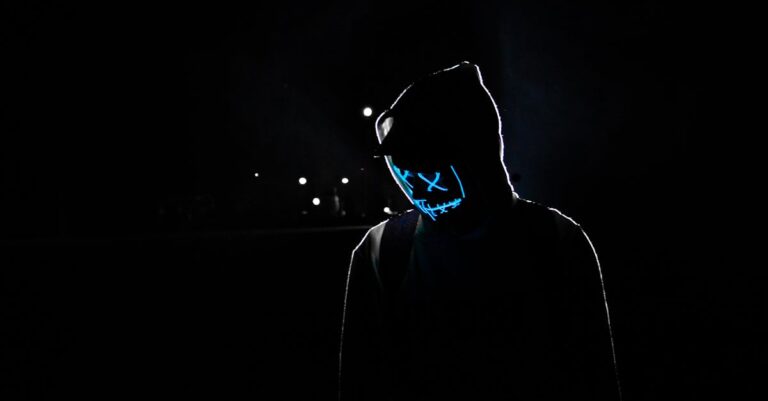
Dr. Elara Voss had never believed in ghosts. The sterile hum of the lab’s air filters filled the silence as she adjusted the electrodes on Kael’s temples, her gloved fingers brushing against the damp skin of his scalp. His eyes were open, unblinking, pupils dilated to dark wells. The machine’s screen flickered with a wave pattern too regular to be human. “What do you see?” she asked, her voice flat, clinical. Kael’s lips parted, but no sound came out. The monitors beeped in rhythmic pulses, matching the slow, steady rise and fall of his chest. Elara leaned closer, her breath fogging the glass of the observation window. She had seen patients with temporal lobe seizures, with dissociative episodes, with memory disorders so rare they had no names. But this—this was different. Kael wasn’t hallucinating. He was remembering something that hadn’t happened yet.
The first anomaly had been subtle. A flicker in the EEG data, a spike in theta waves that didn’t match any known pattern. Elara had dismissed it as interference, a glitch in the software. But then the dreams began. Kael described them in precise detail—buildings that didn’t exist, streets that twisted into impossible angles, a sky that bled purple and gold. When she cross-referenced his accounts with satellite maps and city records, nothing matched. The locations he named were empty lots or abandoned warehouses. The structures he described had never been built. And yet, the details were too specific, too vivid, to be mere fabrication.
“You’re not dreaming,” Elara said one night, her reflection blurred in the glass as she watched Kael sleep. His chest rose and fell in slow, measured breaths. “You’re remembering.” She had spent years studying memory consolidation, how the brain encoded experiences into neural pathways. But this wasn’t memory. This was something else. A loop, a fracture in time that Kael had somehow fallen into.
The experiments began the next week. Elara used transcranial magnetic stimulation to target the hippocampus, hoping to trigger a controlled recollection. Kael’s eyes snapped open mid-session, his breath sharp and uneven. “It’s happening again,” he whispered, his voice trembling. “The city is changing.” She recorded everything—audio, video, neural scans—but the data defied explanation. The brain activity didn’t align with any known cognitive process. It was as if Kael’s mind was accessing a timeline that hadn’t yet occurred.
The anomalies multiplied. The lab’s clocks began to drift, gaining and losing seconds without warning. The temperature in the room fluctuated unpredictably, cold spots forming in the corners where no one could explain them. Elara started sleeping in shifts, her dreams filled with the same images Kael described—buildings with impossible geometry, a sky that pulsed like a living thing. She began to question her own sanity, but the evidence was undeniable. The data didn’t lie.
“You’re not the first,” Kael said one morning, his voice steady despite the tremor in his hands. He had stopped sleeping, or so it seemed. His eyes were sunken, his skin pale beneath the fluorescent lights. “There were others before me. They tried to stop it.” Elara’s fingers tightened around the edge of the table. “Who?” she asked, her voice barely above a whisper. Kael didn’t answer. He just stared at the wall, his expression distant, as if he were already somewhere else.
The hidden agenda revealed itself in fragments. A file buried in the hospital’s archives, accessed through a backdoor Elara had never noticed before. It contained records of patients with similar symptoms—people who had reported visions of a future that didn’t exist. Some had been discharged, others transferred to unknown locations. The final entry was recent, dated just days before Kael’s admission. The patient’s name was Elara Voss.
She confronted the hospital director, a man with a smile that never reached his eyes. “You know what’s happening,” she said, her voice steady despite the storm inside her. The director tilted his head, considering her. “We’re trying to protect you,” he said. “The data is unstable. If it spreads, it could unravel everything.” Elara’s heart pounded. “What are you talking about?” The director didn’t answer. He just handed her a file and walked away.
The file contained blueprints of a facility she had never seen, a structure that looked like a cathedral built from glass and steel. The walls were lined with machines, their purpose unclear. At the center was a chamber labeled “Reverberation Core.” Elara’s hands shook as she read the notes scrawled in the margins. “Subject 12: Memory retention inconsistent. Timeline divergence observed. Containment protocols engaged.” She turned to the next page, her breath catching. “Subject 12: Elara Voss. Date of admission: 2023-04-17.” The date was yesterday.
The realization hit her like a physical blow. She wasn’t just studying Kael. She was part of the experiment. The memories he described weren’t his—they were hers, stolen from a future she hadn’t yet lived. The anomalies weren’t glitches. They were warnings. The hidden agenda wasn’t about protecting her—it was about controlling her.
Elara didn’t sleep that night. She pored over the files, cross-referencing them with the data from Kael’s sessions. The patterns were there, buried in the noise: a timeline that had already happened, a future that had been rewritten. The hospital wasn’t a place of healing. It was a prison for people who had seen too much.
She knew what she had to do. The Reverberation Core was the key, the fulcrum on which everything balanced. If she could access it, she might be able to stop the experiment before it consumed her entirely. But the doors were locked, the security systems impenetrable. She would need help.
Kael was the only one who understood. When she told him, he didn’t ask questions. He just nodded, his expression calm despite the chaos around them. “They’ll try to stop you,” he said. “But you have to go through.” Elara met his gaze, seeing the same determination in his eyes that she felt in her own. They were two pieces of the same puzzle, fragments of a future that hadn’t yet been written.
The night they broke into the facility, the air was thick with tension. The corridors were silent, lit by a cold, blue glow. Elara’s breath came in short, shallow bursts as they moved through the halls, their footsteps muffled by the thick carpet. The Reverberation Core was at the end of the building, a massive chamber lined with machines that hummed with an otherworldly energy.
They didn’t make it far. The alarms blared, red lights flashing as security teams descended on them. Elara felt the impact of a taser against her side, the searing pain radiating through her body. Kael was beside her, his face twisted in pain as he struggled against the force. “Don’t let them take you,” he whispered, his voice barely audible over the noise. “You have to remember.” Then he was gone, pulled away by the guards.
Elara woke up in a cell, her body aching, her mind racing. The walls were bare, the only light coming from a single overhead bulb. She didn’t know how long she had been there. Time had lost its meaning. But she remembered. She remembered the future, the city that had not yet been built, the sky that pulsed with light. And she knew what she had to do.
The experiment wasn’t over. It never would be. But Elara was no longer a subject. She was a witness, a survivor, a part of something larger than herself. And as she sat in the darkness, waiting for whatever came next, she knew one thing for certain: the future was not fixed. It was a mirror, reflecting the choices we make. And she would make hers.
The end.


